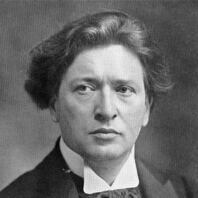페루초 부조니
작곡가
20세기 초 유럽에서 탁월한 음악가로 손꼽히던 페루초 부소니는 이탈리아-독일계 출신으로 교양이 높고 다재다능했다. 동시대인들에게 그는 프란츠 리스트 이후의 대표적인 피아노 비르투오소로 더 많이 알려졌지만, 작곡가로서 300개가 넘는 작품을 남겼다.
페루초 부소니는 1866년 피렌체 근처의 엠폴리에서 피아니스트와 클라리네티스트의 아들로 태어났다. 당시 오스트리아에 속한 트리에스트에서 성장했고 부모에게서 첫 음악 수업을 받았다. “어린 시절에 아버지가 바흐를 공부하도록 엄격하게 권유하셨고, 감사하게도 난 그 덕을 입었다. 그것도 당시 이 거장이 카를 체르니보다 더 가치있다고 여겨지지 않던 나라에서 말이다.” 8세때부터 부소니는 대중 앞에서 음악회를 열었고, 특히 1876년 초봄에 빈에서 선보인 연주가 큰 반향을 불러왔다. 그는 빌헬름 마이어에게 작곡, 대위법, 화성학을 공부했고 15세가 되기 전에 이미 180개가 넘는 다양한 장르의 곡을 썼다. 여러 곳을 돌며 콘서트 투어를 한 뒤 부소니는 볼로냐의 아카데미아 필하모니카에 들어가 피아노를 공부하고 졸업장을 땄다. 1888년 9월 후고 리만의 추천으로 헬싱키 시벨리우스 아카데미에 피아노 교사 자리를 얻었다. 그 다음 루빈시테인의 주선으로 모스크바 콘서바토리에서 가르치다가 시어도어 스타인웨이의 추천으로 보스턴의 뉴잉글랜드 콘서바토리로 옮겼다. 그 후 비르투오소 경력에 집중하기 위해 뉴욕으로 이주했다. 1894년 초 베를린에 정착한 부소니는 1902~09년에 베를린 필하모닉과 ‘새롭고 자주 연주되지 않는 관현악 작품’이라는 획기적인 시리즈 음악회를 선보였다. 또 적은 수이긴 하나 학생들도 가르쳤고, 1970년에는 주목할 만한 ‘새로운 음악 미학에 관한 스케치’를 출간했다. 전쟁에 반대하던 부소니는 1915년에 취리히로 이주했고 1920년에 다시 베를린으로 돌아와 프로이센 예술 아카데미에서 1924년 사망할 때까지 작곡 마스터클래스를 이끌었다.